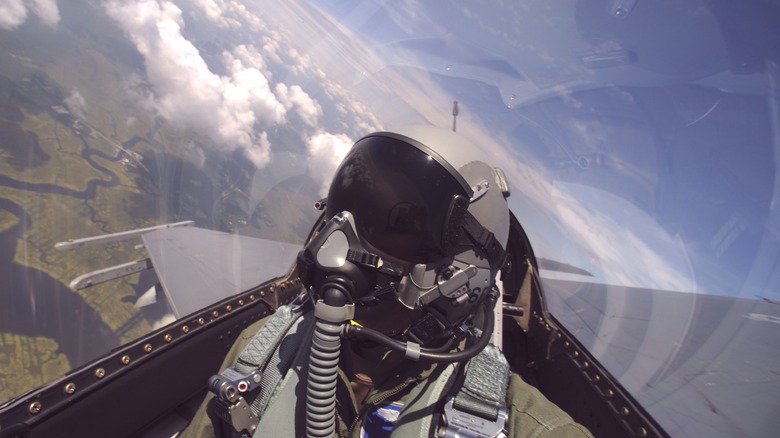This Futuristic Delta Wing Jet Was Almost The Next-Generation F-22
The United States military and its many defense contractors are constantly working on designing, maintaining, and improving U.S. aircraft. Any fighter jet that flies for the military likely underwent numerous design iterations before approval — and after that, they're refitted and modernized to keep them in the fight for as long as possible. Of course, not every aircraft design that seems like a great idea at the time results in the finalization and production of the aircraft.
Some simply end up on the Department of Defense's cutting room floor, unfunded and forgotten. One such aircraft was the Lockheed Martin X-44 Multi-Axis No-Tail Aircraft (MANTA). The MANTA was designed with the notion of creating an airframe that could full pitch, yaw, and roll without any horizontal or vertical tailplanes. From the outset, this design looks odd — most aircraft have a tail fin of some kind, but not the MANTA. The aircraft was designed from the F-22 Raptor, and there are some similarities between the two aircraft.
The MANTA would also have featured a stretched delta wing, so it was a combination of traditional aircraft and winged designs. Ultimately, it wasn't the U.S. Air Force that initiated the contract. NASA was interested in a crewed, tailless research aircraft, and funded two contractors to determine if the design was a viable concept — giving it the designation of X-44A. The program was short-lived, beginning in June 1999 and ending the following year when its funding was terminated.
The MANTA: the tailless jet that could have been
The two most significant differences between the MANTA and the F-22 that inspired it are the lack of tailplanes and its delta wing shape. The Lockheed Martin designers responsible for the MANTA program planned to convert a prototype F-22 Raptor into the newly designed model, as the F-22 was still in development at the time. The aircraft would also have had its flight control surfaces removed. Thrust-vectoring would be used to accomplish pitch, yaw, and roll.
This kind of maneuvering is how rockets are steered as their engines burn, but it can be the main driving force of a jet's movement through the sky via modified thrust vectoring nozzles. The delta wing design would also allow for the storage of more fuel, so designers aimed for better fuel efficiency and enhanced agility. Overall, the MANTA would also have been structurally simple and light, which would've amplified its planned stealth capabilities.
Had it been approved and put into production, the MANTA would have been well-armed. The plan was to include a single 20 mm internal cannon and two AIM-9 Sidewinder missiles. Additionally, the MANTA would have been able to carry six AIM-120 AMRAAM missiles or two 1,000-GBU-23 Joint Direct Munitions — an upgrade package that turns older "dumb" munitions into "smart bombs." Ultimately, the MANTA program was canceled before a prototype could be constructed, though some of its design elements may have gone into developing the Air Force's Next Generation Air Dominance (NGAD) fighter program.
[Featured image by FOX 52 via Wikimedia Commons | Cropped and scaled | CC BY-SA 4.0]

